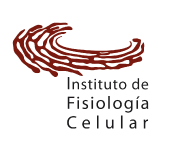Prohibitins, Phb1 and Phb2, function as Atg8 receptors to support yeast mitophagy and also play a negative regulatory role in Atg32 processing.
García-Chávez, D., Domínguez-Martín, E., Kawasaki, L., Ongay-Larios, L., Ruelas-Ramírez, H., Mendoza-Martinez, A. E., Pardo, J. P., Funes, S., & Coria, R. (2024). Prohibitins, Phb1 and Phb2, function as Atg8 receptors to support yeast mitophagy and also play a negative regulatory role in Atg32 processing. Autophagy, 1?12. https://doi.org/10.1080/15548627.2024.2371717
The prohibitins Phb1 and Phb2 assemble at the mitochondrial inner membrane to form a multi-dimeric complex. These scaffold proteins are highly conserved in eukaryotic cells, from yeast to mammals, and have been implicated in a variety of mitochondrial functions including aging, proliferation, and degenerative and metabolic diseases. In mammals, PHB2 regulates PINK1-PRKN mediated mitophagy by interacting with lipidated MAP1LC3B/LC3B. Despite their high conservation, prohibitins have not been linked to mitophagy in budding yeasts. In this study, we demonstrate that both Phb1 and Phb2 are required to sustain mitophagy in Saccharomyces cerevisiae. Prohibitin-dependent mitophagy requires formation of the Phb1-Phb2 complex and a conserved AIM/LIR-like motif identified in both yeast prohibitins. Furthermore, both Phb1 and Phb2 interact and exhibit mitochondrial colocalization with Atg8. Interestingly, we detected a basal C terminus processing of the mitophagy receptor Atg32 that depends on the presence of the i-AAA Yme1. In the absence of prohibitins this processing is highly enhanced but reverted by the inactivation of the rhomboid protease Pcp1. Together our results revealed a novel role of yeast prohibitins in mitophagy through its interaction with Atg8 and regulating an Atg32 proteolytic event. Abbreviation: AIM/LIR: Atg8-family interacting motif/LC3-interacting region; ANOVA: analysis of variance; ATG/Atg: autophagy related; C terminus/C-terminal: carboxyl terminus/carboxyl-terminal; GFP: green fluorescent protein; HA: human influenza hemagglutinin; Idh1: isocitrate dehydrogenase 1; MAP1C3B/LC3B: microtubule associated protein 1 light chain 3 beta; mCh: mCherry; MIM: mitochondrial inner membrane; MOM: mitochondrial outer membrane; N starvation: nitrogen starvation; N terminus: amino terminus; PARL: presenilin associated rhomboid like; Pcp1: processing of cytochrome c peroxidase 1; PCR: polymerase chain reaction; PGAM5: PGAM family member 5 mitochondrial serine/threonine protein phosphatase; PHBs/Phb: prohibitins; PINK1: PTEN induced kinase 1; PMSF: phenylmethylsulfonyl fluoride; PRKN: parkin RBR E3 ubiquitin protein ligase; SD: synthetic defined medium; SDS: sodium dodecyl sulfate; SMD-N: synthetic defined medium lacking nitrogen; WB: western blot; WT: wild type; Yme1: yeast mitochondrial escape 1; YPD: yeast extract-peptone-dextrose medium; YPLac: yeast extract-peptone-lactate medium.



